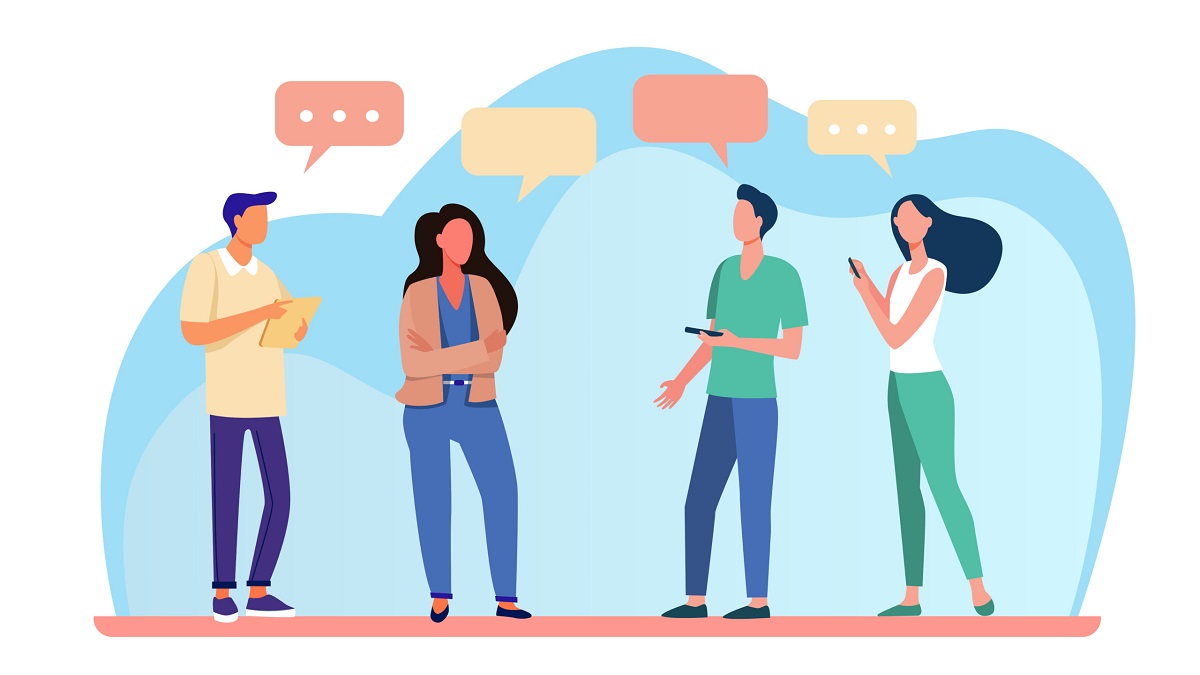Non-verbal communication includes body language, and you can often infer more about someone’s intentions by interpreting their non-verbal cues. Body language encompasses many expressions such as posture, hand movements, eye contact, and smiling. Gaining greater knowledge about body language and knowing Why is Body Language Important can enable you to modify your own and improve communication.
As you are honing your communication abilities, you may be wondering how important body language is. Since gestures may transmit meaning without the need for spoken signals, it is significant. It describes the gestures and emotions on one’s face while conversing with someone else.
Understanding it may improve your comprehension of both the messages you are sending and receiving from other people. Although knowing how to read body language may help you communicate more effectively, not everyone interprets body language the same way. Body language gestures have several intricacies, just as to how cultures and languages vary from one another.
Some Significance of Body Language in Communication

1. Recognize Other People’s Emotions
One solution to Why is Body Language Important is it helps to understand other people’s emotions. Knowing how to interpret body language allows you to infer true feelings from others through their behaviors and unsaid words.
Certain forms of body gestures are hard to read since they happen quickly, so you have to focus intently to be aware of what’s going on.
2. You Can Make Strong Impression
First impressions are very important in business encounters. Everything you do once you’ve been psychologically classified as “powerful,” “submissive,” “trustworthy,” or “suspicious” will be seen through that lens. Someone will seek your finest qualities if she loves you. If she doesn’t trust you, she won’t trust whatever you do.
The human brain is programmed to make fast judgments as a survival strategy, so you can’t stop other people from doing so, but you can learn how to influence those decisions to your advantage.
In less than seven seconds, people form first impressions, and a lot of it depends on your body language. Indeed, research indicates that nonverbal signals influence one’s perception more than four times as much as spoken words.
3. Convey Your Genuine Engagement
The Role of Body Language is that it shows your engagement. Want to express to someone that you are interested in their talk without having to speak?
Make use of your body language. While conversing with someone one-on-one, make an effort to open up your body language by smiling, maintaining a decent posture, making a fair amount of eye contact, and making open hand gestures while engaging in conversation.
This entails making no eye contact, forceful hand movements, hands on hips, or crossed arms! If you give off the impression that you’re not interested in what they have to say, your body language may reflect this. You may strengthen your bonds and build connections with everyone you talk to by paying attention to your gestures as you listen.
4. It Builds Trust
When there is complete harmony between the spoken word and the accompanying body language, trust is built. People will interpret any discrepancy between your spoken message and your body language as a sign of doubt, dishonesty, or (at the very least) internal turmoil.
Colgate University neuroscientists assess “event related potentials,” or peaks and troughs in brain waves, using electroencephalographs (EEG) devices to examine the impact of gestures. When individuals are presented with gestures that go against what is said, one of these valleys happens. This is the identical decrease in brain waves that individuals experience when they listen to meaningless speech.
Therefore, leaders just don’t make sense when they say one thing while indicating another with their gestures. Your vocal message is lost if your body gestures contradict what you are saying. Examples of this include lowering your gaze and scanning the room while attempting to be candid, swaying back on your heels when discussing the organization’s secure future, and crossing your arms over your chest when expressing openness.
5. It Shows Your Confidence
Properly displaying your confidence is an answer to Why is Body Language Important. Not everyone exudes confidence, particularly if they feel uneasy in front of large crowds or under pressure. However, there are days when even the most physically assured individuals in the world don’t feel confident while still looking good.
So, what is their method? Using nonverbal cues. Your audience is more inclined to trust you and follow your example if you project confidence via your nonverbal cues.
6. Face-To-Face Communication is Still Your Most Effective Channel
One thing is always true in this fast-paced, technologically advanced age of texting, email, video chats, and teleconferences: face-to-face contact is still the most effective, productive, and preferred method of communication. In fact, the requirement for face-to-face connection grows more critical the more electronically corporate executives communicate.
Our brains analyze the constant stream of nonverbal clues in face-to-face interactions, which we employ to establish professional closeness and trust. In-person interactions are rich with information. People’s words only provide us with a limited understanding of what they are saying to us.
Vocal tone, tempo, facial emotions, and other nonverbal clues convey the majority of the message as well as all of the emotional subtlety hidden beneath the words. Furthermore, we depend on others’ quick reactions to provide us with feedback on how well our ideas are being received.
Because nonverbal cues are so powerful, when we are really attuned to someone, we unconsciously align our bodies, motions, and even breathing patterns with theirs. What’s most intriguing is that during face-to-face interactions, the brain’s “mirror neurons” imitate sentiments and sensations in addition to behaviors.
Real communication fails when we are deprived of these interpersonal signals and have to depend only on written or spoken words. This causes mental strain.
7. You Are Missing Half of The Discussion If You Are Unable To Understand Body Language
The Role of Body Language is understanding it helps you to understand the full conversation. A growing number of corporate leaders are learning how to interpret business signals in addition to knowing how to send them.
There are two ways to communicate: verbally and nonverbally. This leads to two separate discussions occurring at the same moment. Verbal communication is undoubtedly vital, but it’s not the sole kind of communication. Without the capacity to interpret body language, we lose important details in interactions that might have a good or bad effect on a company.
In situations when individuals aren’t fully committed to a project, leaders must be able to see it and act fast. Thus, two of the most crucial body language cues to watch out for are engagement and disengagement. Disengagement behaviors convey boredom, rage, or defensiveness, while engagement behaviors convey curiosity, receptivity, or agreement.
Open-body postures and head nods or tilts—the worldwide symbol for “giving someone your ear”—are examples of engagement signals. People who are engaged will turn to face you and use their whole body to “point” at you. But as soon as they start to feel uneasy, they could turn their upper body away and give you “the cold shoulder.” Additionally, you won’t likely have their support if they remain cross-legged during the whole meeting.
As an executive coach, I’m always amazed at how much body gestures influence leadership outcomes. You may connect with audiences, inspire subordinates, give ideas more legitimacy, and genuinely portray your charm by using good body language. It’s an effective set of abilities for any leader to acquire.
Types of Body Language
Now that you understand Why is Body Language Important in communication, let’s examine some common forms of body language. These are essential for everyday conversation to be successful. Various forms of body gestures used in communication consist of:
Facial Expressions: Without speaking, the human face is capable of expressing a wide range of emotions. It has a great deal of expression. Additionally, unlike many non-verbal communication methods, facial expressions are universal. For example, all civilizations have the same facial expressions for fear, contempt, grief, and pleasure.
Body Movement & Posture: Have you ever thought about how a person’s posture, gait, or method of sitting could influence how you see them? A person’s gait or overall demeanor conveys a wide range of feelings to others. Among the most common forms of non-verbal communication are your stance, bearing, and posture.
Gesture: Our everyday lives are tied together by our gestures. We sometimes raise our hands in arguments or heated speeches. We call, point, or wave toward an object or someone.
Eye Contact: Making eye contact is a crucial component of nonverbal communication. as most people’s main sense is their visual sense. Many different emotions may be communicated by the way you look at someone. For example, you may use eye contact to convey inflection, animosity, curiosity, or attraction.
Tone of Language: For what reason does body language matter in communication? Because speaking is not the only aspect of communication. What you say also matters a great deal. Even though it may not be categorized as body language, tone plays a crucial role in nonverbal communication. When you talk, people not only hear what you have to say, but they also read the tone of your voice.
FAQs
Q: What are some negative body language?
A: Examples of some negative body language are:
- Looking Around the Room.
- Lack of Eye Contact.
- Staring At Your Phone.
- Not Listening.
- Talking Too Fast.
- Invading Personal Space.
- Lack of Response.
- Folding Your Arms.
- Furrowed Brows and a Scrunched-Up Face.
- Slumping.
- Not Smiling Enough.
- Too Weak or Too Strong a Handshake.
Q: Are there any books on reading body language?
A: There are many books on that topic. Such as:
- The Dictionary of Body Language by Joe Navarro.
- Definitive Book of Body Language by Allan Pease.
- Without Saying a Word by Kasia Wezowski.
- The Secrets of Body Language by Philippe Turchet.
- The Power of Body Language by Tonya Reiman.
- Spy the Lie by Philip Houston.
- Louder Than Words by Joe Navarro.
- You Say More Than You Think by Janine Driver.
Q: Can reading body language help me in an interview?
A: The body gestures of the interviewer can tell a lot about the quality of your answers and your performance.











